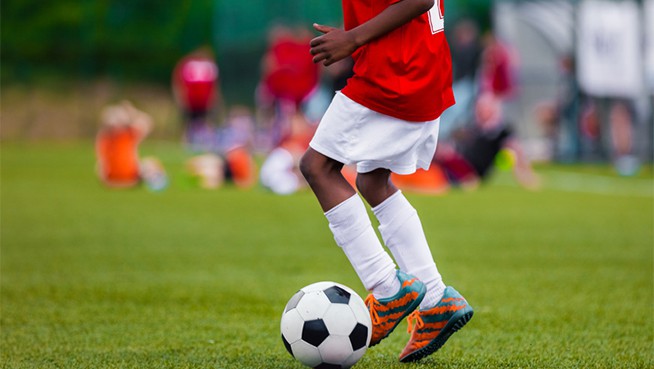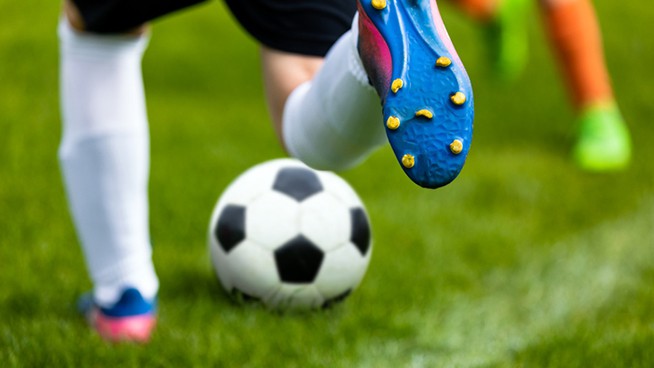How Basketball Players Can Improve Their On-Court Decision-Making Skills
Decision-making is a skill that consists of reaction and the ability to read the situation.
One thing I notice when working with young basketball players (22 years old and younger) is that they tend to rely more on athleticism than the ability to read the defense and react.
Teaching a player how to read the primary defender first is one of the simplest ways to improve decision-making skills. When honing this skill, the less options you give to the player, the faster they should be able to make a decision.
For example, in this video we are working on attacking off the drag. After executing a one-dribble drag to the side, the player has two options:
- If I’m too close to them, drive to the hoop
- If I’m playing off them, shoot the ball
It’s an extremely simple drill, but one that reinforces good decision-making skills for the player. There are plenty of ways you can tweak drills/training to force the player to read and react and train their decision-making abilities.
I like to divide these ways into two categories—non-game situations and game-like situations.
Non-Game Situations help a player hone their decision-making skills and reaction time, but in ways that may not exactly mirror game action. Instead of reading an opponent, the player listens to verbal commands (calling numbers, colors, etc. and having them react accordingly) or responds to non-verbal commands (hand signals, touching a player and instructing them to go as soon as you release the contact). You can see me utilize a variety of hand signals the players must respond to accordingly during these drills:
Game-like situations are where the player must read the opponent exactly as they would during a game. For example, if the on-ball defender looks lackadaisical, you attack the rim. Or if you see a teammate with the ball cutting toward you, you swoop in to take the handoff. That’s the case in this drill:
Non-game situations can improve a player’s reaction time, and I prefer to use them as part of the warm-up or a progression of a particular exercise. Game-like situations are crucial to in-game success, as I believe they’re the most realistic type of training one can receive other than playing in real games against opponents.
Integrating decision-making into a young player’s training can help improve their reaction time and raise their basketball IQ. It helps them adapt to the organic nature of a basketball game as opposed to simply running around cones. Adding decision-making to a drill or exercise can be quite simple, but it’s a small tweak that can make a noticeable difference in the player’s performance.
READ MORE:
RECOMMENDED FOR YOU
MOST POPULAR
How Basketball Players Can Improve Their On-Court Decision-Making Skills
Decision-making is a skill that consists of reaction and the ability to read the situation.
One thing I notice when working with young basketball players (22 years old and younger) is that they tend to rely more on athleticism than the ability to read the defense and react.
Teaching a player how to read the primary defender first is one of the simplest ways to improve decision-making skills. When honing this skill, the less options you give to the player, the faster they should be able to make a decision.
For example, in this video we are working on attacking off the drag. After executing a one-dribble drag to the side, the player has two options:
- If I’m too close to them, drive to the hoop
- If I’m playing off them, shoot the ball
It’s an extremely simple drill, but one that reinforces good decision-making skills for the player. There are plenty of ways you can tweak drills/training to force the player to read and react and train their decision-making abilities.
I like to divide these ways into two categories—non-game situations and game-like situations.
Non-Game Situations help a player hone their decision-making skills and reaction time, but in ways that may not exactly mirror game action. Instead of reading an opponent, the player listens to verbal commands (calling numbers, colors, etc. and having them react accordingly) or responds to non-verbal commands (hand signals, touching a player and instructing them to go as soon as you release the contact). You can see me utilize a variety of hand signals the players must respond to accordingly during these drills:
Game-like situations are where the player must read the opponent exactly as they would during a game. For example, if the on-ball defender looks lackadaisical, you attack the rim. Or if you see a teammate with the ball cutting toward you, you swoop in to take the handoff. That’s the case in this drill:
Non-game situations can improve a player’s reaction time, and I prefer to use them as part of the warm-up or a progression of a particular exercise. Game-like situations are crucial to in-game success, as I believe they’re the most realistic type of training one can receive other than playing in real games against opponents.
Integrating decision-making into a young player’s training can help improve their reaction time and raise their basketball IQ. It helps them adapt to the organic nature of a basketball game as opposed to simply running around cones. Adding decision-making to a drill or exercise can be quite simple, but it’s a small tweak that can make a noticeable difference in the player’s performance.
READ MORE:











